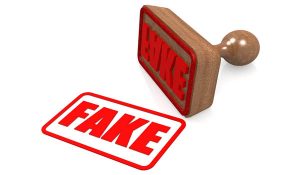Cooking the Books
As presidents develop their budget they work with the Council of Economic Advisors (CEA) to develop forecasts as part of the process, but the Trump administration is taking a very different approach. Instead of calculating how various policies would impact levels of growth, the Trump administration directed CEA to “predict sustained economic growth of 3-3.5%,” reports Washington Post, and then “backfill all the other numbers in their models to produce these growth rates.”
In reality, economists such as the Federal Reserve and Congressional Budget Office project growth at 1.8-1.9% a year, as it has been for the past decade.
Trump is also looking to change how the US trade deficit is calculated so that it appears to be bigger than it is, says the Wall St Journal. Under the new method, if a product is imported to the US and then sold abroad, only the import will be counted. Trump has consistently inflated the deficit and now he wants to make those numbers “real” to support his goals of applying tariffs.
Talk about Fake News!!
Next Step: Two For One Regulations
To make sure federal departments keep Trump’s promise of discarding two regulations for every new one put in place, Trump signed an executive order that inserts supervisors inside every agency.
Under the “Enforcing the Regulatory Reform Agenda” executive order, department heads will appoint a “regulatory reform officer” at each federal agency. They will also create a task force that looks at all existing regulations to find those ripe for repeal or modification within 90 days.
How will they make decisions on which regs go and which stay? Trump’s rule is that only regulations that cost industries $0 in 2017 can stay – forget any benefits that offset that, such as saving lives, protecting our health, safeguarding fundamental rights, and preserving wildlife and wildlands.
In reality, no regulation is ever issued until it gets approved by the Office of Information and Regulatory Affairs. Its job is to provide the final review of all regulations.
Although Trump says his goal is to remove “outdated, unnecessary or ineffective” red tape regulations, putting in people who no nothing about why regulations were needed in the first place is no way to run agencies. Professionals in those agencies should be in charge of those decisions. To put new regulations in place, they will have to go through the task force – clearly, Trump’s preferred version of red tape.
“The Trump administration wants less government, except when it wants more government to carry out its oil and gas industry agenda. This executive order will put Trump’s un-vetted corporate minions above experts at our federal agencies in charge of protecting our water, our land, and our climate. We can only hope the resistance inside these agencies will be strong enough to stop these destructive Trump toadies from dismantling protections for the American people,” says Travis Nichols at Greenpeace.
Regulations Dumped Under Trump
Here’s the kind of regulation Trump doesn’t like – he repealed a rule that bars fossil fuel companies from ripping off the government and taxpayers when they extract coal and oil from public lands. To get away with paying government royalties, here’s what they do: they sell the product to a subsidiary at a low price and pay the royalties based on that low-ball sale. Then the subsidiary sells it on the market for the “real” price royalty-free.
In another repealed regulation, coal miners that blow the tops off mountains can now dump all that directly into streams. Is that a job-creating repeal or just a way to line coal company profits?
“Regulations exist for a reason. Critical standards and safeguards protect businesses and the public from a range of real risks and threats that markets can not adequately address. In addition, good regulations encourage innovation, a key ingredient to a robust economy. What business needs is a level playing field, they don’t need a politically motivated, unaccountable enforcer answering to polluters. Every sport has rules to ensure a fair game. We need the same standards in government and business,” states the American Sustainable Business Council.
The CEO of Dow Chemical, who heads Trump’s advisory council on manufacturing, praised Trump for creating “the most pro-business administration since the Founding Fathers.”
In a statement, the White House says that over 3000 regulations were issued during the Obama administration, costing taxpayers $873 billion. What’s left out of that statement are that the benefits outstrip the costs 3-to-1 – for $139 billion a year in costs, taxpayers get $458 billion in benefits, reports InsideClimate News.
A lawsuit has been filed against the order – calling it unconstitutional overreach – by Earthjustice, Public Citizen, Natural Resources Defense Council, Communications Workers of America and AFL-CIO. The 2 for 1 executive order “seeks to hamstring federal agencies protecting our environment, health, safety, workforce, and civil rights. We will not allow Trump to gut our system of protections and override our cherished laws in the name of a dollar.” They are asking the court to invalidate the executive order and bar agencies from implementing it.


You choose to misunderstand. The 3-3.5% example. His goal is to obtain 3-3.5% growth. How else than to have agencies plan for it? Then measure the shortfall and revise the plan to drive growth up to the goal. Trade deficit and all other government statistics have been so cooked for so long you cannot even recognize the right way to do things. Go read some economics books and come back with references on the right way to do things. Thanks for your opinion but it does not help me or your readers. When you want to move into leadership critique begin with providing your references on the successful business you have lead into a trillion dollar turnaround recovery.
It’s one thing to have a goal for 3-3.5% growth. It’s another thing to work out the numbers to show you have achieved that growth, when you haven’t.